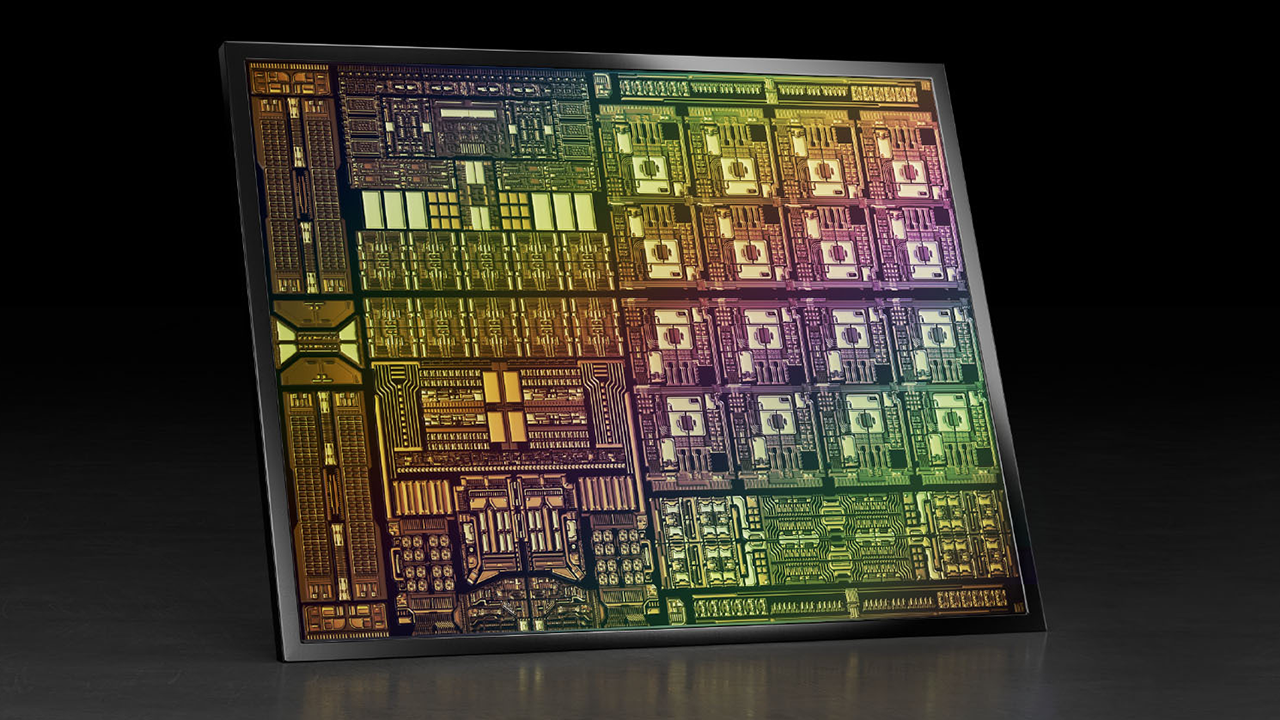Nvidia introduced two new data processing units (DPUs) at its GTC event on Monday, the BlueField-3 and the BlueField-4, that it says will be available in 2022 and 2024, respectively. The new DPUs are designed to offload network, storage, security, and virtualization loads from datacenter CPUs.
Nvidia’s BlueField-3 DPU is a custom-built system-on-chip that integrates 16 general-purpose Arm Cortex-A78 cores along with multiple accelerators for software-defined storage, networking, security, streaming, and TLS/IPSEC cryptography just to name a few. It also has its own DDR5 memory interface. The Cortex-A78 cores can run a virtualization software stack and offload numerous workloads from host CPUs. Meanwhile, the VLIW engines can be programmed through Nvidia’s DOCA (data-center-on-a-chip architecture) software development kit to accelerate their workloads.
While BlueField-3 looks to be a pretty straightforward SoC on paper, it is an extremely complex chip with formidable compute performance: The DPU contains 22 billion transistors and features performance of 42 SPECrate2017_int (which is comparable to the performance of a 12-core 2nd Generation Xeon Scalable CPU) as well as 1.5 TOPS. Its successor — the BlueField-4 — will integrate 64 billion transistors and feature 160 SPECrate2017_int as well as 1000 TOPS performance.
The BlueField-3 DPU will come on a card equipped with Mellanox’s 400Gbps Ethernet or Infiniband NIC for connectivity. Its descendant, BlueField-4, will feature an 800Gbps connectivity, Nvidia revealed today.
From a technology perspective, Nvidia’s DPUs have nothing to do with the company’s GPUs as they are developed by engineers from Mellanox, a company that Nvidia now owns. But from a business perspective, they are just as promising as datacenter GPUs and SoCs, as demand for cloud computing is growing rapidly.
In recent years Nvidia put a lot of effort into the development of its datacenter and HPC GPUs, and presently it commands the lion’s share of those markets. Meanwhile, as datacenters are becoming more complex and various data manipulations by CPUs are getting costly in terms of performance and power, DPUs may actually face growing demand in the coming years. So it’s not surprising that Nvidia’s engineers are hard at work designing leading-edge DPUs as they are a natural way for the company to grow further in the datacenter.
DPUs can also benefit the company’s GPU business. As CPUs get freed from networking, security, and cryptography workloads, they will spend more clocks running applications, some of which also rely on GPUs. So more freed-up CPU cycles may lead to demand for more GPU cycles.
Nvidia says it will start sampling of its BlueField-3 DPU in the first quarter of 2022.
